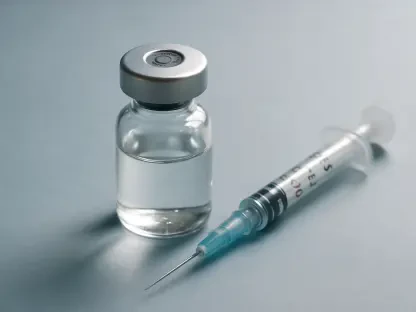In an unexpected financial contraction, North Carolina has found itself grappling with the ramifications of substantial federal budget cuts to its public health funding. Initially unforeseen, these reductions have significantly impacted the state’s ability to support a variety of health-related initiatives. With $230 million in federal funding suddenly axed, the Department of Health and Human Services (DHHS) in North Carolina confronts the intensifying challenge of maintaining vital public health programs, especially in areas with critical needs such as HIV prevention, tobacco cessation, and well water testing. The abrupt nature of these cuts has not only put numerous initiatives at risk but has also compelled the state to lay off 80 employees and eliminate numerous contracted roles. Already ranking 45th in the nation for per capita public health spending, North Carolina’s position becomes even more precarious under these financial constraints. The broader implications of these cuts particularly threaten rural counties and vulnerable communities, prompting a re-evaluation of priorities and strategies to safeguard public health services essential for high-risk populations.
Administrative Response to Funding Reductions
In response to the federal cuts, North Carolina’s administration has been propelled into action, seeking to address the potential decline in public health services and resources. Attorney General Jeff Jackson has initiated a legal battle against the federal government, arguing that previously allocated funds by Congress should be properly distributed as initially planned. The lawsuit aims to restore access to these crucial funds, ensuring they are used as Congress intended, particularly for services pivotal to the health of North Carolina’s senior citizens and families. Jackson has termed the withdrawal of funding as both illegal and perilous, citing the detrimental effects such cuts could have on vital services like rural hospitals and key public health programs. This legal challenge highlights the critical nature of these funds for the smooth operation of local health departments and the continuity of essential programs, once stable financial support is reinstated.
Alongside this legal maneuver, a significant reshuffling in the state’s health leadership has taken place. With Lawrence Greenblatt stepping in as the new health director, the state faces the dual challenges of financial instability and leadership transition. The proposed state budget exacerbates this situation by requiring DHHS to cut vacant positions to conserve $10 million annually through 2027. This mandate has led to further furloughs, compounding the pressure on an already burdened department. The administrative measures undertaken attempt to mitigate the detrimental effects of these financial cuts, but equally raise questions about the sustainability and future readiness of North Carolina’s public health initiatives in maintaining adequate care and services for its residents in rural and medically underserved areas.
Impact on Local Public Health Programs
The ramifications of the federal funding cuts extend deeply into the heart of local public health operations across North Carolina, with substantial layoffs looming over vital health programs. A stark example presents itself in Mecklenburg County, where cuts have led to the dismissal of eleven HIV disease investigators. These professionals have played indispensable roles in surveilling cases and ensuring newly diagnosed individuals are connected with necessary care. They also coordinated outreach efforts, arranging testing for contacts to curtail HIV transmission. Despite the federal budget initially covering these positions through September, bureaucratic delays in fund authorization have preemptively halted these roles, challenging county-level health departments’ financial management and public health strategies. In Durham County, similar financial hurdles trail the health department, which expects a 10% grant reduction dedicated to HIV testing in the current fiscal year. Such funding shortfalls threaten to diminish essential testing efforts, critical in managing and preventing the public spread of communicable diseases within local communities.
Compounding these challenges is the cessation of an Environmental Protection Agency grant, which has abruptly paused initiatives for well water testing and treatment across North Carolina. This cutback occurred soon after Tropical Storm Helene underscored the necessity of well water testing in protecting public health. With wells in Western North Carolina contaminated by storm-related flooding, previous testing had been vital in preventing waterborne illnesses. While some testing continues due to specific relief funds, the overarching program’s continuity remains jeopardized without a reliable financial stream. This scenario underscores a critical gap in environmental health oversight, heightening the urgency for strategic investment and policy revisions to ensure long-term public health protection against environmental hazards.
Challenges in Tobacco Prevention Efforts
The eradication of the Centers for Disease Control and Prevention’s tobacco prevention unit epitomizes the added strain federal cuts have imposed on North Carolina’s public health landscape. The termination resulted in the furlough of nine state-level professionals and multiple county staff members focused on tobacco control. Subsequently, the state rescinded agreements with local health departments that had been crucial in tackling tobacco usage. This retreat not only signifies a loss of expert workforce but also marks a significant setback in addressing tobacco-related health issues. As secondhand smoke exposure risks linger unaddressed, the vacuum left by the cessation of coordinated state-led initiatives becomes palpable. Although some educational programs geared towards youth prevention efforts persist for another year, the enduring feasibility and impact of these initiatives remain riddled with uncertainty. This funding withdrawal leaves health leaders devoid of a strategic support framework, posing significant challenges in devising and executing effective tobacco control measures that align with future health objectives and priorities.
As financial constraints tighten, North Carolina’s health officials are confronted with complex administrative bottlenecks and resource allocation dilemmas, testing their capacity to adapt and innovate. These budget cuts reflect a broader conversation about resource efficiency and the adequacy of existing public health strategies. While some stakeholders voice concerns about compromised service effectiveness, others cautiously acknowledge the potential for refining resource utilization. The overarching narrative, however, remains one of vulnerability and trepidation, as the state navigates a path fraught with fiscal uncertainties while striving to uphold public health standards amidst looming austerity.
The Road Ahead for North Carolina’s Public Health Sector
North Carolina is facing an unexpected financial crisis due to significant federal budget cuts to its public health funding. These unforeseen reductions have severely limited the state’s capability to sustain various health initiatives. With a staggering $230 million in federal funding abruptly withdrawn, the North Carolina Department of Health and Human Services (DHHS) finds itself struggling to maintain essential public health programs. Critical areas such as HIV prevention, tobacco cessation, and well water testing are now in jeopardy. The sudden and drastic nature of these cuts has forced the state to lay off 80 employees and terminate numerous contracted positions, further straining resources. North Carolina, already ranked 45th nationwide in per capita public health spending, faces heightened challenges under these financial constraints. The wider effects of these cuts pose significant threats to rural counties and vulnerable communities, necessitating a reevaluation of priorities and strategies to protect health services crucial for high-risk populations.









